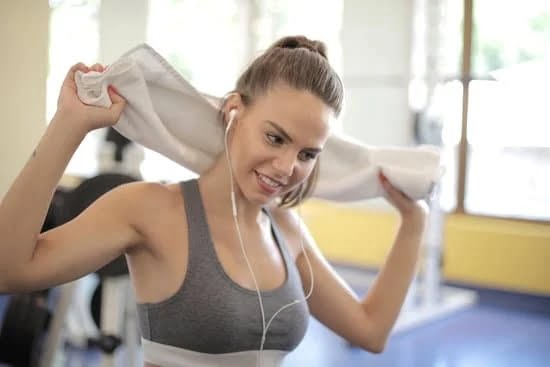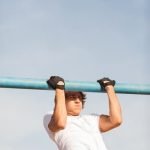Are you looking for a way to stay fit and healthy without the need for expensive gym equipment or memberships? Look no further. In this article, we will explore the benefits of an at-home fitness routine with no equipment. With the convenience of working out in the comfort of your own home, you can easily incorporate fitness into your daily life without any added costs.
When it comes to at-home fitness routines, there are numerous advantages that extend beyond saving money. Not only do you have the freedom to work out on your own schedule, but you also have the flexibility to choose a workout environment that suits your preferences. Whether it’s in your living room, backyard, or even a makeshift home gym, at-home workouts offer convenience and comfort unlike any other.
In this article, we will be discussing various aspects of at-home fitness routines including setting a workout schedule, warm-up exercises, cardio workouts, strength training using bodyweight exercises, flexibility and stretching techniques, proper cool down methods, and tips for staying motivated. By the end of this read, you will have all the necessary tools to create an effective and sustainable at-home fitness routine with no equipment.
Setting a Schedule
According to a study published in the British Journal of Sports Medicine, morning exercise can help improve productivity and focus throughout the day. On the other hand, an evening workout can be beneficial for relieving stress and winding down after a long day. It’s important to consider your personal preferences and energy levels when deciding on the best time for your at home fitness routine.
In addition to considering the physiological benefits of different workout times, it’s also important to take into account your daily schedule and commitments. For some individuals, scheduling workouts in the morning may be more feasible due to work or family obligations later in the day.
Others may find that exercising in the evening allows them to decompress and dedicate uninterrupted time to their workout. Finding a balance between personal preferences and practicality will help you establish a sustainable at home fitness routine with no equipment.
| Workout Time | Potential Benefits |
|---|---|
| Morning | Improves productivity and focus |
| Evening | Relieves stress and promotes relaxation |
Warm-Up
When starting an at home fitness routine with no equipment, it’s important to begin with a proper warm-up to prepare your body for the workout ahead. A good warm-up increases blood flow to your muscles, loosens your joints, and raises your body temperature.
This helps reduce the risk of injury and allows you to perform at your best during the main part of your workout. Here are some effective at-home warm-up exercises you can incorporate into your routine:
- Jumping jacks
- High knees
- Arm circles
- Leg swings
- Hip rotations
These simple exercises require no equipment and can be done in a small space. Performing them for just 5-10 minutes before your main workout can make a big difference in how you feel and perform.
In addition to these exercises, dynamic stretching is also an important part of a proper warm-up. Dynamic stretches involve moving parts of your body through a full range of motion in a controlled manner. Examples of dynamic stretches that are perfect for at-home warm-ups include leg swings, arm circles, and walking lunges.
Remember that warming up should be specific to the type of workout you’ll be doing. If you’ll be focusing on lower body strength training or cardio, include warm-up exercises that target those areas specifically. By incorporating these warm-up exercises into your at home fitness routine with no equipment, you’ll set yourself up for a successful and safe workout session.
Cardio
One great option for cardio at home is high-intensity interval training (HIIT). This type of workout involves alternating between short bursts of intense exercise and brief periods of rest or lower-intensity activity. HIIT can be done with exercises like jumping jacks, mountain climbers, or burpees, making it a versatile and efficient way to get in a great cardio workout without any equipment.
Another effective cardio workout for at home fitness routines is dancing. Whether you follow along with a dance workout video or simply put on your favorite music and freestyle, dancing is a fun way to get your heart rate up and improve your mood at the same time. You can also incorporate movements like high knees, butt kicks, or side shuffles to add some variety and intensity to your dance cardio routine.
In addition to HIIT and dancing, other simple and effective cardio workouts that can be done at home without equipment include jumping rope (if you have enough space), stair climbing, or even just going for a brisk walk or jog around your neighborhood. All of these options are great ways to get your heart pumping and incorporate cardio into your at-home fitness routine.
| At-Home Cardio Workouts | Description |
|---|---|
| High-Intensity Interval Training (HIIT) | Alternating between intense exercise and rest periods for an efficient cardio workout. |
| Dancing | A fun way to get your heart rate up while improving mood and coordination. |
| Jumping Rope / Stair Climbing / Brisk Walk or Jog | Other simple options for getting in a good cardio workout at home without needing equipment. |
Strength Training
When it comes to at-home fitness routines with no equipment, strength training is an essential component. This type of workout helps to build and tone muscles, increase bone density, and boost metabolism. The great news is that you don’t need fancy gym equipment to get a quality strength training workout in at home. In this section, we will explore some effective bodyweight exercises that target different muscle groups.
Upper Body Exercises
To target your chest, shoulders, and triceps, push-ups are a classic bodyweight exercise that can be modified to suit different fitness levels. You can also try variations such as diamond push-ups or incline push-ups to change the intensity of the exercise. For your back and biceps, bodyweight rows using a sturdy table or a low bar can provide an effective workout.
Lower Body Exercises
Squats and lunges are fantastic exercises for targeting the quadriceps, hamstrings, glutes, and calves. These can be easily performed at home without any equipment. To add intensity, you can do jump squats or walking lunges. Additionally, calf raises are a simple yet effective way to strengthen the calves using just your body weight.
Core Exercises
Plank variations are wonderful for engaging the entire core including the rectus abdominis, transverse abdominis, obliques, and lower back muscles. Mountain climbers and bicycle crunches are also great options for working on your abs at home without any equipment.
Incorporating these bodyweight exercises into your at-home fitness routine can help you effectively target different muscle groups without needing any specialized gym equipment. By adjusting your technique and increasing reps or sets as needed, you can continue challenging yourself and making progress with your strength training workouts.
Flexibility
Stretching is a crucial component of any at-home fitness routine with no equipment. Not only does it help improve flexibility and range of motion, but it also reduces the risk of injury during workouts. Incorporating stretching into your fitness regimen can help increase blood flow to your muscles, improve posture, and relieve muscle tension. Here are some effective stretches that you can incorporate into your at-home workout routine:
- Forward Fold: Stand with your feet hip-width apart and slowly bend forward from the hips, keeping your spine straight. Allow your upper body to hang towards the floor and hold for 30 seconds to one minute.
- Child’s Pose: Start on your hands and knees, then sit back on your heels while reaching your arms forward. Hold this position for 30 seconds to one minute to stretch the back, shoulders, and hips.
- Quadriceps Stretch: While standing, grab one ankle and pull it towards your glutes while keeping your knees together. Hold for 30 seconds on each leg to stretch the quadriceps.
In addition to these specific stretches, incorporating yoga into your at-home fitness routine can greatly improve flexibility. Yoga poses such as downward dog, pigeon pose, and warrior pose can help enhance overall flexibility while providing a great workout for both the mind and body.
It is important to note that proper breathing techniques during stretching can enhance the effectiveness of these exercises. Take deep breaths in through the nose and exhale through the mouth as you hold each stretch. Remember to listen to your body and avoid pushing yourself too far beyond your limits to prevent injury during stretching exercises in your at home fitness routine with no equipment.
Cool Down
After a challenging at-home fitness routine with no equipment, it is essential to properly cool down to prevent injury and aid in muscle recovery. Cool down exercises help the body transition from a state of intense physical activity to a state of rest. These exercises can also reduce muscle soreness and prevent stiffness by promoting blood circulation and bringing the heart rate back to its resting state.
Importance of Cooling Down
Cooling down after an at-home workout is crucial for allowing the body to gradually return to its pre-exercise state. It helps prevent lightheadedness or fainting by slowly bringing down the heart rate. Additionally, cooling down can also help reduce the buildup of lactic acid in the muscles, which can cause post-workout soreness and tightness.
Effective Cool Down Exercises
Some effective cool down exercises that can be incorporated into your at-home fitness routine include gentle stretching, such as hamstring stretches, quad stretches, and shoulder stretches. Additionally, low-intensity cardio exercises like walking or slow jogging in place can help bring down your heart rate gradually. Yoga poses such as child’s pose, downward dog, and pigeon pose are also great for cooling down the body while improving flexibility.
By incorporating proper cool down techniques into your at-home fitness routine with no equipment, you can minimize the risk of injury and promote overall well-being. Taking the time to allow your body to recover and transition out of intense physical activity will ensure that you continue to see progress without setbacks caused by overexertion or strain.
Tips for Staying Motivated
In conclusion, maintaining a consistent at-home fitness routine with no equipment is not only achievable but also incredibly beneficial for overall health and well-being. By following the tips provided in this article, individuals can easily stay motivated and on track with their workouts, leading to a healthier and happier lifestyle.
It’s important to remember that finding the perfect time for your workouts, incorporating effective warm-up exercises, engaging in simple cardio workouts, targeting different muscle groups with bodyweight exercises, practicing flexibility through stretching, and properly ending your workout with a cool down are all essential components of a successful at-home fitness routine. By following these guidelines, individuals can easily maintain their exercise regimen without any specialized equipment.
Staying motivated may be challenging at times, but incorporating variety into your routine, setting specific goals, tracking your progress, and seeking support from friends or family can make all the difference. Additionally, always remember the benefits of staying active and how it positively impacts both physical and mental health.
In no time, your at-home fitness routine will become a natural part of your daily life. With dedication and perseverance, anyone can achieve their fitness goals right from the comfort of their own home.
Frequently Asked Questions
Can You Get a Good Workout at Home Without Equipment?
Yes, it is absolutely possible to get a good workout at home without any equipment. Bodyweight exercises like push-ups, squats, lunges, and planks can provide a challenging workout for your muscles. Additionally, activities like yoga and high-intensity interval training (HIIT) require no equipment and can effectively improve strength and cardiovascular health.
Is 30 Minutes of Working Out a Day Enough?
Thirty minutes of working out a day can be enough if you are doing the right type of exercise. High-intensity workouts or circuit training can be very effective in a short amount of time. However, if you’re focusing on more moderate activities like walking or yoga, you may need longer sessions to see significant results.
Can You Build Muscle Without Weights?
Building muscle without weights is possible through bodyweight exercises that engage multiple muscle groups, such as push-ups, pull-ups, dips, and pistol squats. Resistance bands and even household items like water jugs or backpacks filled with books can also be used to add resistance to your workouts and help build muscle mass.
Focusing on proper form and increasing the intensity gradually are key components to successfully building muscle without weights.

Passionate about providing useful information to anyone with an interest in the field of Personal Training, I strive to pass on to our readers quality information and to answer any questions about Personal Trainers, the work they do and how to become one.





